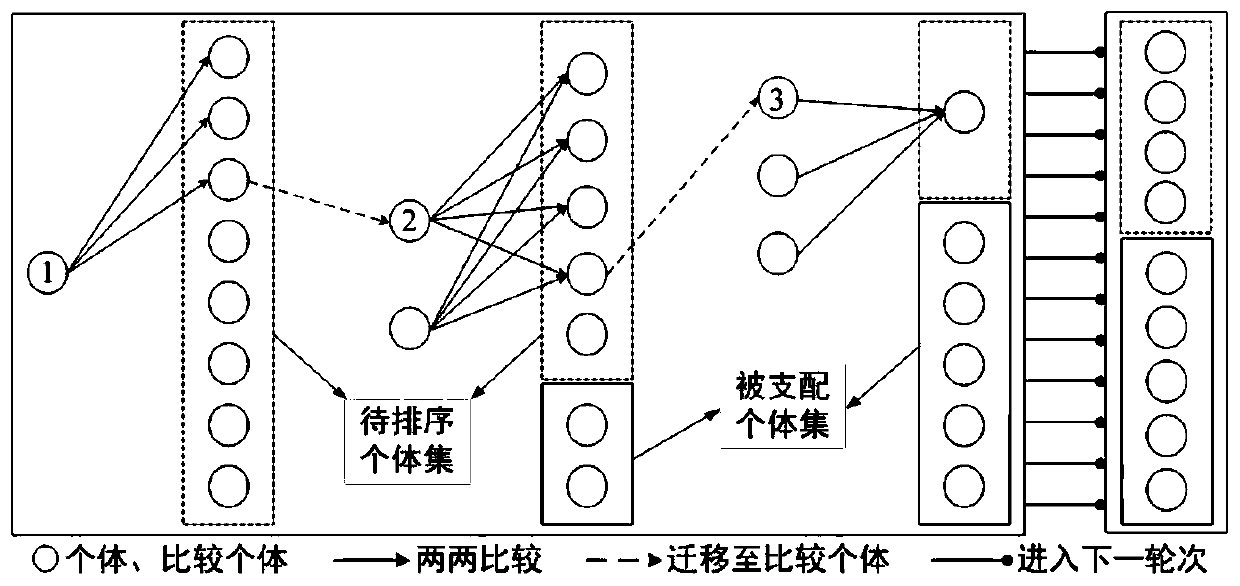A cascade reservoir group ecology-power generation dynamic mutual feedback control method
A cascade reservoir and ecological technology, applied in the direction of circuit devices, AC network circuits, single-network parallel feeding arrangement, etc., can solve the problems of single target and poor adaptability
- Summary
- Abstract
- Description
- Claims
- Application Information
AI Technical Summary
Problems solved by technology
Method used
Image
Examples
Embodiment 1
[0064] Such as figure 1 As shown, a cascade reservoir group ecology-power generation dynamic mutual-feedback control method S100 includes the following steps:
[0065] Step S110: Make the power generation and water flow conditions meet the water quality water demand (W qua ), cut-off water demand (W dry ), water demand for sand flushing (W sed ), ecological water demand (W eco ) The spatio-temporal proportions of the four ecological standards are used as the objective function of the ecology-power generation mutual-feedback regulation model of the cascade reservoir group. The constraint set of the cascade reservoir group ecology-power generation mutual Equations, water storage limit constraints, power generation flow limit constraints, outflow flow constraints and power station output limit constraints;
[0066] Step S120: Using the improved non-dominated sorting genetic algorithm to obtain the optimal outflow of each reservoir at each time period from the ecology-power ge...
Embodiment 2
[0070] Based on Embodiment 1, the objective function of the cascade reservoir group ecology-power generation mutual-feedback control model is specifically:
[0071] (1) Power generation target:
[0072]
[0073] In the formula: E is the total power generation of the power station involved in the calculation during the dispatching period, kW h; I is the number of reservoirs; i is the serial number of the reservoir, i=1,2,...,I; T is the number of time slots during the dispatching period; t is the serial number of the time slot , t=1,2,...,T; P i,t is the output of reservoir i in period t, kW; Δt is the number of hours in period t, h.
[0074] (2) Ecological goals:
[0075] The ecological guarantee rate is defined as the time-space ratio of water flow conditions meeting the ecological standards of the above four water demand parameters. Taking the period division (month) of long-term hydropower dispatching as an example, the calculation formula of the ecological guarantee ...
Embodiment 1 Embodiment 2
[0083] Based on Embodiment 1 or Embodiment 2, the constraint conditions of the cascade reservoir group ecology-power generation mutual-feedback control model are as follows:
[0084] Water balance equation:
[0085] V i,t+1 =V i,t +3600×(I i,t -D i,t )Δt,i∈[1,I],t∈[1,T]
[0086] In the formula, V i,t is the storage capacity of reservoir i in period t, m 3 ; I i,t is the inflow flow of reservoir i in period t, m 3 / s.
[0087] Inbound flow balance equation:
[0088]
[0089] In the formula, q i,t , Q i,t , S i,t Respectively, the interval flow, power generation flow and abandoned water flow of reservoir i in time period t, m 3 / s;m i is the mth directly upstream reservoir of reservoir i; U i is the set of reservoirs directly upstream of reservoir i.
[0090] Outbound flow balance equation:
[0091] D. i,t =Q i,t +S i,t ,i∈[1,I],t∈[1,T]
[0092] Water storage limit constraints:
[0093]
[0094] In the formula, are the upper and lower limits of the ...
PUM
 Login to View More
Login to View More Abstract
Description
Claims
Application Information
 Login to View More
Login to View More - R&D
- Intellectual Property
- Life Sciences
- Materials
- Tech Scout
- Unparalleled Data Quality
- Higher Quality Content
- 60% Fewer Hallucinations
Browse by: Latest US Patents, China's latest patents, Technical Efficacy Thesaurus, Application Domain, Technology Topic, Popular Technical Reports.
© 2025 PatSnap. All rights reserved.Legal|Privacy policy|Modern Slavery Act Transparency Statement|Sitemap|About US| Contact US: help@patsnap.com



